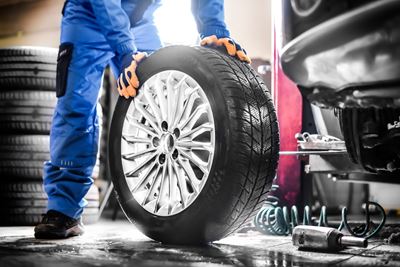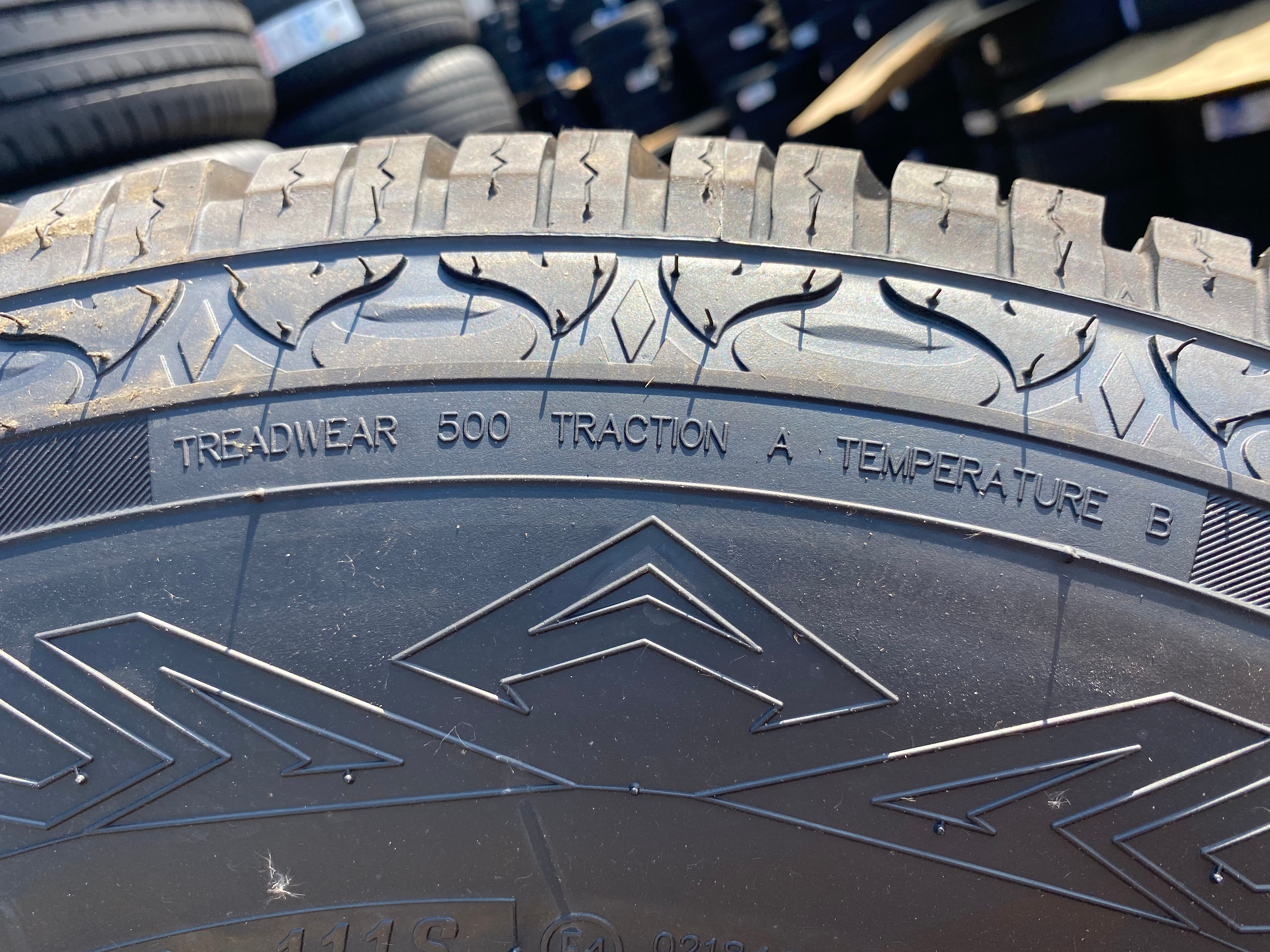Si cambia su código postal, se borrará su aprobación previa.
Se requiere código postal.
How Many Miles Do Tires Last? Everything To Know

The average car contains roughly 30,000 parts and takes around 30 hours of labor to manufacture. A vast majority of these parts are nothing that you’ll need to be concerned about. However, there are a few of them that will need to be changed out fairly regularly.
Changing out your oil filter and windshield wiper blades is typically a bi-annual event. Other parts such as your transmission or muffler can last upwards of a decade before being replaced. Tires fall right in the middle of this range as you’ll probably need to buy a new set of tires every three to six years.
Using a calendar is a good way for humans to gauge the passage of time, but it doesn’t work that way for tires. Mileage is much more important to the overall health of a tire than time. For that reason, a lot of people prefer to change out their tires based on their total mileage. While that’s not a bad idea, there are a few more factors that need to be taken into consideration.
What Factors Influence the Lifespan of Tires?
There is no concrete answer to “how many miles are tires good for?”. Extensive testing of a few different brands found that all-season tires will typically last between 50,000 and 85,000 miles.
It’s important to note that while tires can last that long, they’ll become much less reliable as they age. The compound materials will break down and the tread will erode. Driving on bald tires is a very bad idea and you should swap them out as soon as possible.
Mileage is a solid indicator of the health of your tires, but there are several factors that are just as important. Your tires can wear out much faster depending on the following factors.
The Type of Tire
Not all tires are manufactured the same and have different primary functions. The numbers and letters printed on the side of your tire provide a lot of important information. The most relevant for this discussion is the speed rating. For example, winter tires have a lower rating because they have softer tread compounds.
These compounds will remain more pliable in extreme cold and function better. Another useful attribute is that softer tires will grip the road more evenly. The extra grip will create more traction and help you retain control in water, snow, and ice. The problem with extra traction is that it creates extra friction. That’s why winter tires will traditionally only last about 35,000 miles.
The Treadwear Rating
Every tire has a treadwear rating that is meant to give you an estimate of how long the tread will last. The treadwear rating is a simple numerical scale: the higher the number, the longer it should last.
The way that it works is a control tire is given a rating of 100 and runs for a specified number of miles. The tread depths are measured periodically to create a projected tread life. That means that if a tire has a 500 treadwear rating, the tread is expected to last five times as long as the control tire did.
There are basically three groupings of treadwear:
-
High Treadwear. These tires have a treadwear rating of 500 or higher and are primarily found on commercial vehicles and trailers. High treadwear tires typically don’t require much maintenance and last a long time. The only problem is that they usually have very low grip and might be a risky idea for passenger cars.
-
Medium Treadwear. These tires have a treadwear rating between 200 and 500 and are the most common passenger vehicle tires. The balance of grip and durability provides a perfect blend of safety and longevity. Most all-season tires will fall in the upper end of this category and winter tires in the bottom.
-
Low Treadwear. These tires have a treadwear rating of 200 or lower and are often used by competitive racers. Low treadwear tires provide excellent grip and are able to easily stick to both dry and wet pavements. The problem is that gripping the pavement like that will quickly wear down the treads. Tires like these are extremely high performance but don’t last much longer than a few thousand miles at most.
The Drivetrain
You probably know that the front and rear tires of your car will wear down differently. The edges of your front tires will usually wear down much faster as they are responsible for turning. That’s why experts recommend rotating your tires every 3,000 to 5,000 miles (typically when you change your oil).
The location of your tires isn’t the only influence on their lifespan though. The drivetrain of your vehicle will also play an important role. The drivetrain dictates where the power for forward motion is generated. That means the tires on a front-wheel-drive car will wear down differently than rear-wheel, all-wheel, or four-wheel-drive vehicles.
The Road Conditions
The mileage of a tire is important, but there is a really big difference between “hard” and “smooth” tire mileage. A mile on smooth and flat highway pavement is nowhere near the same as a mile out in the rough and rocky country.
Anyone that has an off-roading hobby can tell you that you’ll need to replace those tires quite often. It shouldn’t come as too much of a surprise that driving on dirt, mud, snow, and gravel will wear down your tires faster. Even driving on an incline in the hills or mountains can shift the weight of your vehicle and wear down the tires quicker.
Your Driving Habits
A majority of the factors on this list are things that are out of your control. However, the way that you drive can play a major role in the lifespan of your tires. If you have a lead foot behind the wheel, then you might be your own worst enemy in terms of shredding your tires.
The main problem with speeding is that it generates a lot of friction on your tires. The higher amount of friction will create an intense level of heat in your tires. Remember that tires are primarily made out of rubber which melts at high temperatures. Frequently driving faster than the speed rating on your tires will soften up the rubber much faster and weaken your tire.
As if that weren’t bad enough, higher speeds will mean harder stops. Tires are a crucial part of braking and they’ll be utilized every time you touch the brakes. Driving fast will often require you to stomp down on your brake pedal causing your tires to lock up before coming to a full stop. The tread will be stuck in place and along the pavement until they eventually lose their built-up momentum. If rolling over pavement damages your tread, then you can probably imagine how devastating sliding will be.
Replacing Your Tires Isn’t So Bad
Keeping your tires properly inflated, rotating them often, and building good driving habits are a few ways to prolong the life of your tires. Even if you follow these tips closely, you’ll still need to replace your tires eventually. Whether you decide to replace them based on mileage or years in service is up to you, but you should replace them before they go flat or blow out.
By using Rent A Wheel, you’ll be able to shop for the perfect replacement tires for your needs. The flexible payment plan and free shipping can help you save some money and afford a high-quality set of tires. Visit Rent A Wheel today so you can reset the miles and time on your tires.
Sources:
Why Braking Is All About Tires | Road and Track
How Often Should You Rotate Car Tires? | Car and Driver
The Truth About Tire Treadwear | Consumer Reports
Are Snow Tires Really Better Than All-Season Tires? | Family Handyman
How Long Do Tires Last? | Consumer Reports
How Long Does it Take to Build a Car From Start to Finish? | It Still Runs
